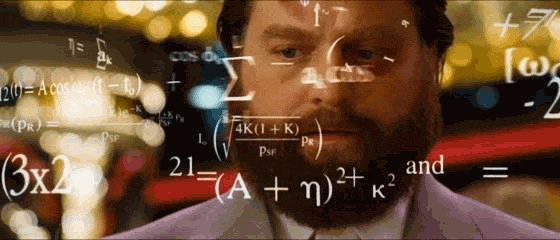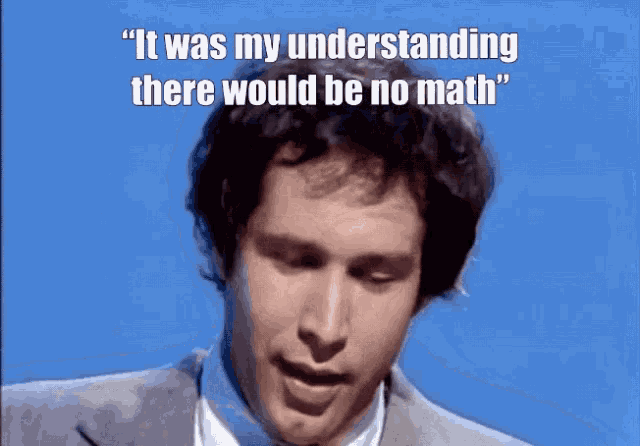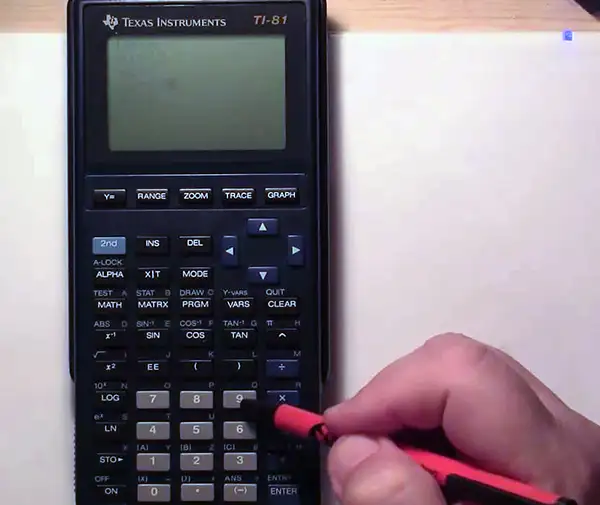Specifically in the statistics arena. It has been a long, long time since I had to do anything with Expected Value and Variance and I've got a problem that requires that knowledge. I just need to get some direction in how to head with it.
Colleges
- AAC
- ACC
- Big 12
- Big East
- Big Ten
- Pac-12
- SEC
- Atlantic 10
- Conference USA
- Independents
- Junior College
- Mountain West
- Sun Belt
- MAC
- More
- Navy
- UAB
- Tulsa
- UTSA
- Charlotte
- Florida Atlantic
- Temple
- Rice
- East Carolina
- USF
- SMU
- North Texas
- Tulane
- Memphis
- Miami
- Louisville
- Virginia
- Syracuse
- Wake Forest
- Duke
- Boston College
- Virginia Tech
- Georgia Tech
- Pittsburgh
- North Carolina
- North Carolina State
- Clemson
- Florida State
- Cincinnati
- BYU
- Houston
- Iowa State
- Kansas State
- Kansas
- Texas
- Oklahoma State
- TCU
- Texas Tech
- Baylor
- Oklahoma
- UCF
- West Virginia
- Wisconsin
- Penn State
- Ohio State
- Purdue
- Minnesota
- Iowa
- Nebraska
- Illinois
- Indiana
- Rutgers
- Michigan State
- Maryland
- Michigan
- Northwestern
- Arizona State
- Oregon State
- UCLA
- Colorado
- Stanford
- Oregon
- Arizona
- California
- Washington
- USC
- Utah
- Washington State
- Texas A&M
- Auburn
- Mississippi State
- Kentucky
- South Carolina
- Arkansas
- Florida
- Missouri
- Ole Miss
- Alabama
- LSU
- Georgia
- Vanderbilt
- Tennessee
- Louisiana Tech
- New Mexico State
- Middle Tennessee
- Western Kentucky
- UTEP
- Florida International University
High School
- West
- Midwest
- Northeast
- Southeast
- Other
- Alaska
- Arizona
- California
- Colorado
- Nevada
- New Mexico
- Northern California
- Oregon
- Southern California Preps
- Washington
- Edgy Tim
- Indiana
- Kansas
- Nebraska
- Iowa
- Michigan
- Minnesota
- Missouri
- Oklahoma Varsity
- Texas Basketball
- Texas
- Wisconsin
- Delaware
- Maryland
- New Jersey Basketball
- New Jersey
- New York City Basketball
- Ohio
- Pennsylvania
- Greater Cincinnati
- Virginia
- West Virginia Preps
ADVERTISEMENT
Install the app
How to install the app on iOS
Follow along with the video below to see how to install our site as a web app on your home screen.
Note: This feature may not be available in some browsers.
You are using an out of date browser. It may not display this or other websites correctly.
You should upgrade or use an alternative browser.
You should upgrade or use an alternative browser.
Is anyone here really good at math
- Thread starter kc78
- Start date
I just need to get some direction in how to head with it.

That is the focus of my applied math degree that I backed into. And I am probably no help whatsoever. Go over to the actuary boards (they exist) or hit up someone on campus.
Specifically in the statistics arena. It has been a long, long time since I had to do anything with Expected Value and Variance and I've got a problem that requires that knowledge. I just need to get some direction in how to head with it.
I've got a version of Minitab and have some stats experience (specific to stuff I normally work on).
What's the question?
Not good at math, here. Really had to try hard to succeed. I did get an "A" in statistics in college, but for me, if I don't use it I lose it.
Also there's a physics forum with a section where people help with a lot of different math topics.
I can recite most of the statistics off the 1986 and 1987 Topps Baseball Cards. I think I'm your man.Specifically in the statistics arena. It has been a long, long time since I had to do anything with Expected Value and Variance and I've got a problem that requires that knowledge. I just need to get some direction in how to head with it.
I can recite most of the statistics off the 1986 and 1987 Topps Baseball Cards. I think I'm your man.
Oil Can Boyd's W/L and strikeout numbers in 1986?
Same for Kent Tekulve?
I just need a bit of direction in what the math wants so I can write the program to solve this.
My initial thought was to create a vector with 100 values in sequential order, another vector with 100 values randomized, and to then just loop through it to see how many match since it just wants the initial observation. But since it asks about expected value and variance I'm assuming it needs something more and I'm a bit lost.
Smith College is a residential women's liberal arts college in Northampton, MA that is steeped in tradition. One such tradition is to give each student at graduation a diploma at random. At the end of the ceremony, a diploma circle is formed, and students pass the diplomas that they receive to the person next to them, and step out once they've received their diploma. What is the expected number of students who receive their diplomas in the initial disbursement?
The analytic solution (of the expect value) is easy to derive. Let $X_i$ is the event that $ith$ student receives their diploma then $E(X_i)=1/n$, for all i (the diplomas are uniformly distributed). n is the number of diplomas (students). Thus, if $Y$ is the sum of all the events $X_i$, then $E(Y)=1$. It is sometimes kind of surprising that the expected number of students receiving their diplomas in the initial disbursement does not depend on $n$. The variance can be more difficult to derive since $X_i$ are dependent.
Simulate the problem and find the expected value and the variance of the number of students who receive their diplomas in the initial giving.
My initial thought was to create a vector with 100 values in sequential order, another vector with 100 values randomized, and to then just loop through it to see how many match since it just wants the initial observation. But since it asks about expected value and variance I'm assuming it needs something more and I'm a bit lost.
Got up through Calc II and Dif Eq in college, so I'm pretty much an expert in statistics as well.
Mean - average
Median - middle one
Mode - the most common
Let me know if you need anything more advanced than that.
Mean - average
Median - middle one
Mode - the most common
Let me know if you need anything more advanced than that.
I just need a bit of direction in what the math wants so I can write the program to solve this.
Smith College is a residential women's liberal arts college in Northampton, MA that is steeped in tradition. One such tradition is to give each student at graduation a diploma at random. At the end of the ceremony, a diploma circle is formed, and students pass the diplomas that they receive to the person next to them, and step out once they've received their diploma. What is the expected number of students who receive their diplomas in the initial disbursement?
The analytic solution (of the expect value) is easy to derive. Let $X_i$ is the event that $ith$ student receives their diploma then $E(X_i)=1/n$, for all i (the diplomas are uniformly distributed). n is the number of diplomas (students). Thus, if $Y$ is the sum of all the events $X_i$, then $E(Y)=1$. It is sometimes kind of surprising that the expected number of students receiving their diplomas in the initial disbursement does not depend on $n$. The variance can be more difficult to derive since $X_i$ are dependent.
Simulate the problem and find the expected value and the variance of the number of students who receive their diplomas in the initial giving.
In the initial disbursement, it is expected that 69 out 420 females will receive their diploma. If the expected number had been 70, then 350 women would be left without a degree after the first go-around.
Is the answer potato?I just need a bit of direction in what the math wants so I can write the program to solve this.
My initial thought was to create a vector with 100 values in sequential order, another vector with 100 values randomized, and to then just loop through it to see how many match since it just wants the initial observation. But since it asks about expected value and variance I'm assuming it needs something more and I'm a bit lost.
sounds like a binomial distribution. mean = np
variance = np(1-p)
eta: google “example 7.17: the smith college diploma problem - SAS and R”
variance = np(1-p)
eta: google “example 7.17: the smith college diploma problem - SAS and R”
Last edited:
I'm Indian so basically I am the winner of this thread unless there's a Korean amongst HORT.
sounds like a binomial distribution. mean = np
variance = np(1-p)
eta: google “example 7.17: the smith college diploma problem - SAS and R”
R is far, far better than SASS
This is for a class in R.R is far, far better than SASS
And I did see that problem, however that problem is asking a slightly different answer. It's asking how many rounds until everyone has the diploma. This one simply wants to know how many would have it after the first round. I can write a for loop to simulate that, but I'm not certain if it's asking for more.
Not that I'm aware of.Is there not a package for this....my knowledge about R is in the geostatistics side
I eventually did the following but I don't know if it's correct.
1. Created a vector of 1-100 to simulate 100 students
2. Created a vector which randomized the values from the student vector to represent the scrambled diplomas.
3. Created a loop to compare them 1 to 1 and sum a variable anytime they matched.
From there I determined the probability of success by dividing the number who matched by the number of students.
I determined the probability of failure by subtracting the above from 1.
I then determined the mean by multiplying the number of students by probability.
And the variance by multiplying numstudents * probability * probability of failure
Whether that's the correct math, I don't know but that's the best my google-fu can determine.
In the initial disbursement, it is expected that 69 out 420 females will receive their diploma. If the expected number had been 70, then 350 women would be left without a degree after the first go-around.
69 would have been my answer, also.
Do spouses count?I'm Indian so basically I am the winner of this thread unless there's a Korean amongst HORT.
It’s always 42.The answer is 42.
Not that I'm aware of.
I eventually did the following but I don't know if it's correct.
1. Created a vector of 1-100 to simulate 100 students
2. Created a vector which randomized the values from the student vector to represent the scrambled diplomas.
3. Created a loop to compare them 1 to 1 and sum a variable anytime they matched.
From there I determined the probability of success by dividing the number who matched by the number of students.
I determined the probability of failure by subtracting the above from 1.
I then determined the mean by multiplying the number of students by probability.
And the variance by multiplying numstudents * probability * probability of failure
Whether that's the correct math, I don't know but that's the best my google-fu can determine.
I'm sure there is a package for that and off hand what you did looks right
That's more textbook math that I'm up for dealing with this week...😨I just need a bit of direction in what the math wants so I can write the program to solve this.
My initial thought was to create a vector with 100 values in sequential order, another vector with 100 values randomized, and to then just loop through it to see how many match since it just wants the initial observation. But since it asks about expected value and variance I'm assuming it needs something more and I'm a bit lost.
Was never good at story problems so could you expand on the 69?In the initial disbursement, it is expected that 69 out 420 females will receive their diploma. If the expected number had been 70, then 350 women would be left without a degree after the first go-around.
I'm Indian so basically I am the winner of this thread unless there's a Korean amongst HORT.
I assume dot not feather.I'm Indian so basically I am the winner of this thread unless there's a Korean amongst HORT.
This is what happens when you go to grad school in your mid-40s. Undergrad statistics was a long, long time ago. lolThat's more textbook math that I'm up for dealing with this week...😨
Had I known this was "textbook" problems, I'd have passed.This is what happens when you go to grad school in your mid-40s. Undergrad statistics was a long, long time ago. lol
I don't remember half the stuff in math/stats/physics classes I got A's in.
Not that I'm aware of.
I eventually did the following but I don't know if it's correct.
1. Created a vector of 1-100 to simulate 100 students
2. Created a vector which randomized the values from the student vector to represent the scrambled diplomas.
3. Created a loop to compare them 1 to 1 and sum a variable anytime they matched.
From there I determined the probability of success by dividing the number who matched by the number of students.
I determined the probability of failure by subtracting the above from 1.
I then determined the mean by multiplying the number of students by probability.
And the variance by multiplying numstudents * probability * probability of failure
Whether that's the correct math, I don't know but that's the best my google-fu can determine.
I believe this is an n! (factorial) problem.
You have 1 orientation all the students line up in, and n! (or (n-1)! or whatever) permutations the diplomas can be given out.
So, you simulate out of those permutations, the combined likelihoods of 1, 2, 3, ..... n students all getting their diplomas on the first handout.
There will be a different answer if you're computing the probability that 1 will get their diploma, vs what the question here is, the likely number that will. But I think you can simulate this with those combined/summed factorial calculations.
Similar threads
- Replies
- 133
- Views
- 3K
- Replies
- 11
- Views
- 691
- Replies
- 0
- Views
- 80
- Replies
- 5
- Views
- 330
ADVERTISEMENT
ADVERTISEMENT





